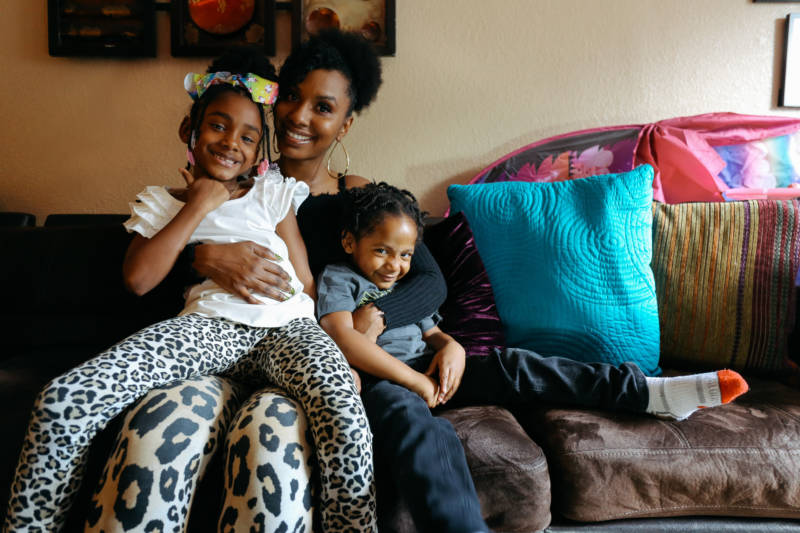When Toni Rochelle moved to Oakland in 2017, she didn't know much about the local school system. It was a busy time for her — it was late summer, she was in the middle of a divorce and she was juggling two jobs.
"I did everything late because of what was going on at the time," she admitted. That included enrolling her daughter, Talia, for transitional kindergarten.
Rochelle decided to simply go with her neighborhood school, Sankofa Elementary. It checked off a lot of boxes: It was right down the street from her job, right around the corner from her house, and it had an after-school program. It seemed perfect.
Once school started, however, Rochelle began to have concerns.
"I think we had maybe two or three principals at the time during that school year," said Rochelle. "It was just a lot of things. Coming in, picking up my child and she's watching TV!"
It wasn't until Rochelle met parents from a local activist group called Oakland Reach that she learned the school's test scores were far below state standards.
Those same parents also told her about a way to try to enroll her children in better schools, through a process called open enrollment.
"There's no public announcement for this," said Rochelle. "It's a secret. A well-kept secret."
During Oakland's open enrollment period, parents of kindergartners and students transitioning into middle or high schools can indicate and rank their school preferences. It's also when students in any grade can try to change schools. Parents must submit applications between November and February for both OUSD and charter schools.

